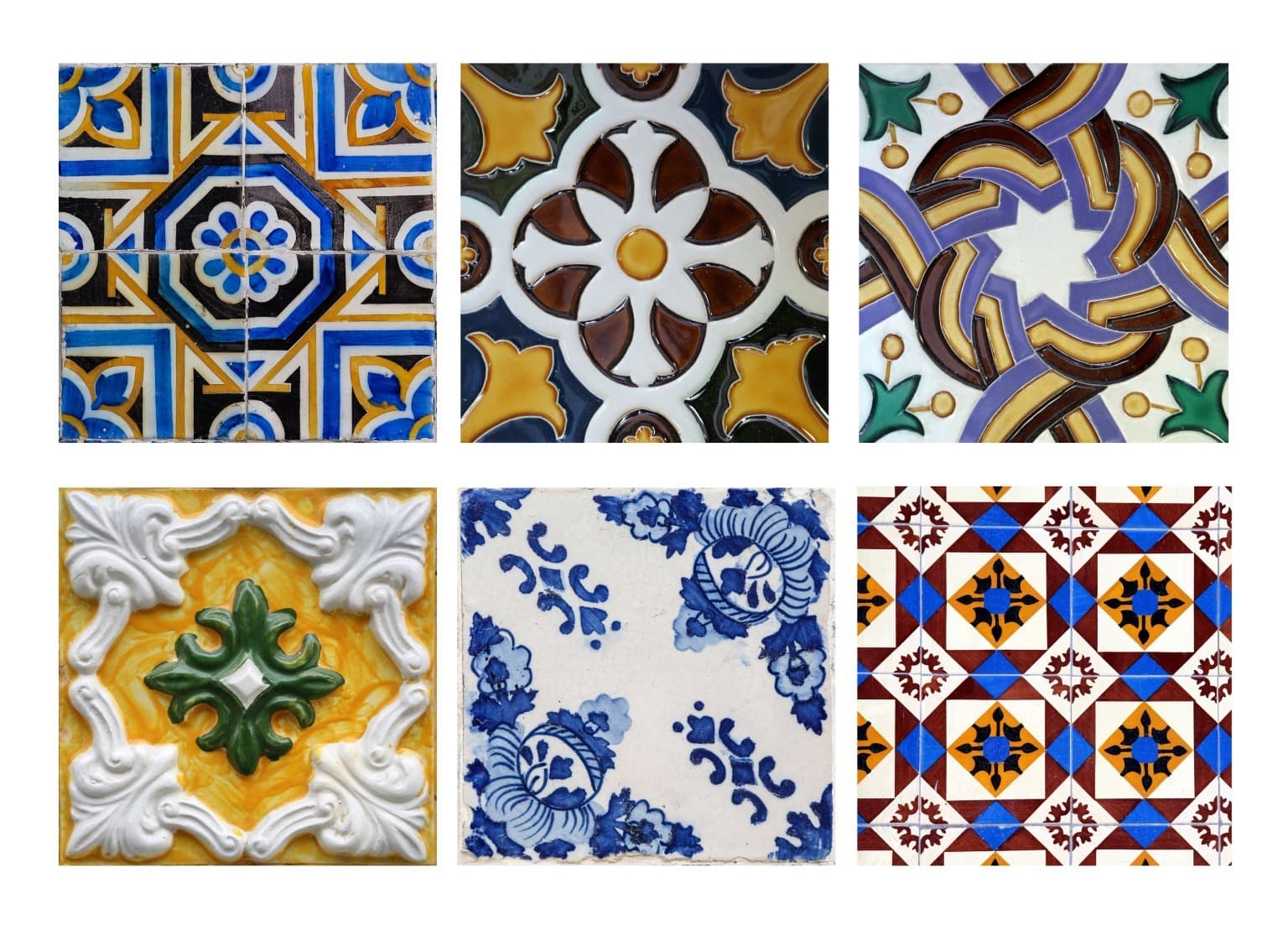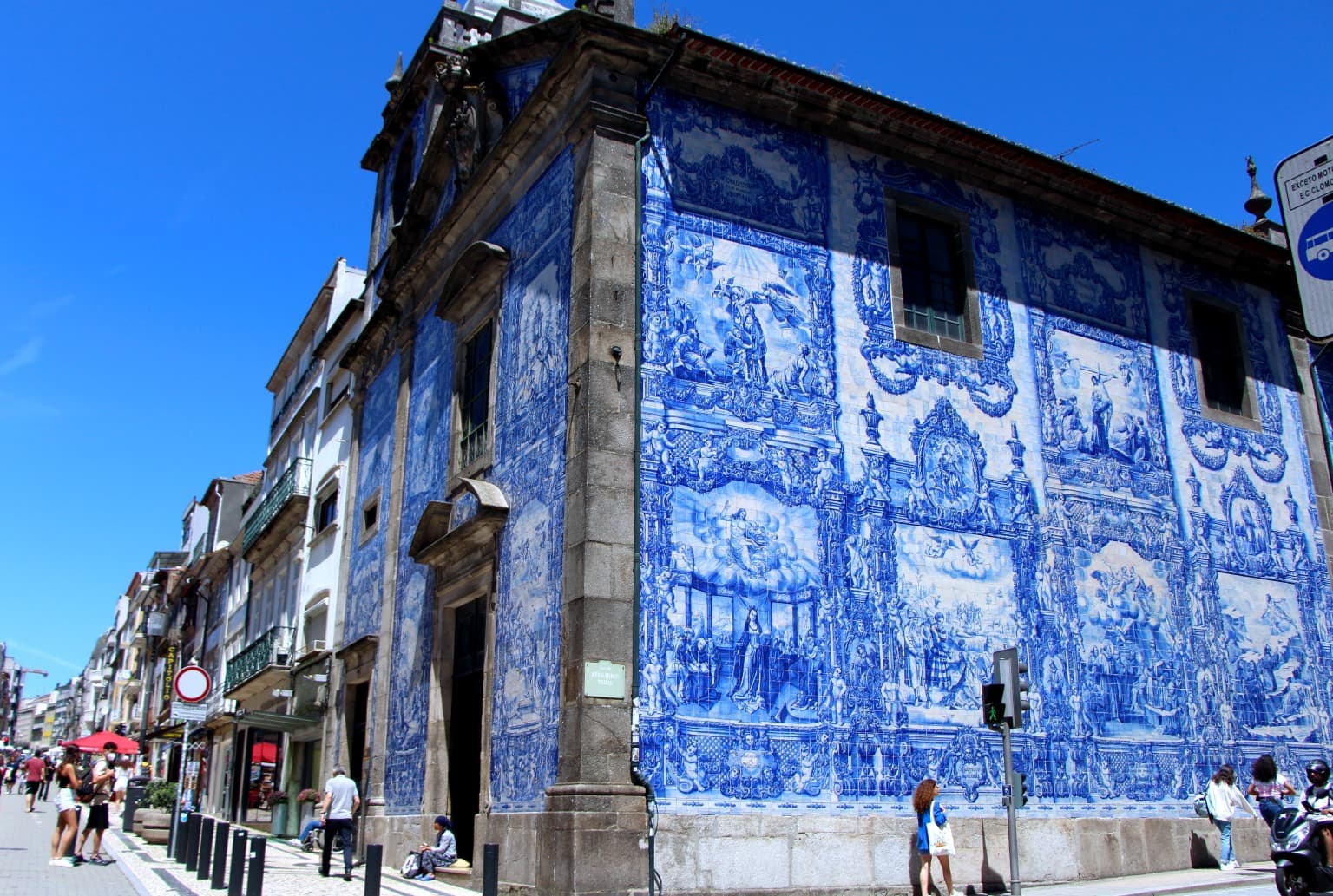Portuguese Azulejos: Porto’s Tile Treasures
January 5, 2024
Portugal is widely recognized today for its gastronomy, climate, hospitality, culture, and its commitment to preserving its history and traditions. One unique way the Portuguese celebrate these is through the art of the famous ceramic tiles, known as “azulejos” in Portuguese. Portuguese ceramics represent a strong expression of cultural heritage and stand as a unique cultural achievement of the Portuguese people.

A colorful array of Portuguese Azulejos, showcasing intricate designs and cultural heritage.
These renowned “azulejos” have transcended their role as mere ornamental pieces, attaining the metaphysical status of art through poetic interventions in architecture and urban design. The art of tiling reached the Iberian Peninsula through the significant influence of the Arabs, who introduced these unfamiliar mosaics to their conquered territories, adorning palace walls with bright and ostentatious designs. The captivating geometric patterns fascinated the Spaniards, Portuguese, and Iberian artisans of that era, leading them to simplify and adapt the designs to their standards.
Portuguese ceramic tiles exhibit various styles, each marked by specific features reflecting the period and region of origin. One well-known style is Baroque, characterized by ornamental motifs and dramatic scenes, originating in the 17th century. Another popular style, Rococo, emerged in the 18th century, distinguished by softer, delicate shapes, floral elements, and sinewy curves. The Pombaline style, arising after the Lisbon earthquake of 1755, is recognized for its austere and geometric aesthetic, a response to the urgent need for city reconstruction.
As the 20th century unfolded, this heritage gained even more significance with the arrival of influential figures who elevated the art, such as Rafael Bordalo Pinheiro and Jorge Barradas. Figures like Maria Keil, Júlio Resende, Júlio Pomar, Sá Nogueira, Carlos Botelho, João Abel Manta, and Eduardo Nery, among others, contributed significantly to the field of ceramics and tiles during the mid-20th century.
To experience this rich cultural heritage in Porto, several places showcase these artistic expressions: the Oporto Cathedral with its magnificent blue and white tiles; São Bento train station featuring an atrium adorned with over 20,000 hand-painted tiles by Jorge Colaço; the 18th-century baroque church, Igreja do Carmo, which had its tiles installed in 1910; the Capela das Almas on Rua de Santa Catarina; the Igreja de Santo Ildefonso with its façade covered in more than 11,000 tiles, and the stunning Casa da Música reflecting 16th-century Portuguese and European Renaissance tiles.

Capela das Almas: A Mosaic Masterpiece of Portuguese Heritage